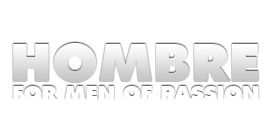
 Maryna Dar shares the raw experience of those who survived one of the worst natural disasters to hit the Northeast in recent decades. As you know, Hurricane Sandy swept through the Caribbean, the Mid-Atlantic and the Northeast with devastating power, reaching all the way to the Southeastern, Midwestern states and Eastern Canada, taking away over 250 lives, injuring hundreds, destroying thousands of homes and leaving millions of people without power. Here’s how you can help.
Maryna Dar shares the raw experience of those who survived one of the worst natural disasters to hit the Northeast in recent decades. As you know, Hurricane Sandy swept through the Caribbean, the Mid-Atlantic and the Northeast with devastating power, reaching all the way to the Southeastern, Midwestern states and Eastern Canada, taking away over 250 lives, injuring hundreds, destroying thousands of homes and leaving millions of people without power. Here’s how you can help.
Sandy was the worst natural disaster to hit the U.S. since Hurricane Katrina. There was ruin everywhere: trees on a sidewalk, a 8,000 lbs piece of crane dangling above a busy street in Midtown, a traffic light (ironically, one of the few working ones left on the Lower East Side) laying on the sidewalk, wires exposed, and thousands left homeless…
Yet, it was the floodwater and the surge from the ocean which caused the most damage, not so much the wind. MTA tunnels were flooded and life on Manhattan was paralyzed with the worst traffic I’ve ever seen. Gas stations ran out of fuel and people spent up to 6 hrs waiting in line. Explosion on Con Ed station left many friends in Downtown Manhattan and the boroughs without electricity, and hot water, freezing in the darkness, eating canned food for many days, unable to call for help due to the spotty cell phone service. Terrible fire in Queens destroyed a number of homes. NJ shoreline, Rockaways and Staten Island were among some of the hardest hit areas.

“It’s really bad, devastation is everywhere. We have two feet of water on our block. Trees falling down, there’s no power, no TV, Internet or home phone. But we keep the faith, we are still here,” said a Brooklyn resident the day after the storm reached the Northeast.
I was among the lucky few who didn’t lose power and stores on my street remained open. I went to one of the local collecting stations to donate some goods like batteries, a flash light, a blanket, and canned food. Next morning, I joined hundreds of volunteers and staff of New York cares to help out at the Stuyvesant Community Center and later at 200 Madison Community Center. The later site was literally surrounded by enormous crowd waiting to drop off supplies, picking up the goods, filling out the FEMA assistance forms, collecting them, signing up and coordinating a growing number of volunteers. Then there were a few Hummers parked by the entrance and a lot of busy people in uniform – the National Guard and the police, NGO staff was tweeting non-stop to ensure constant flow of necessary items, others were sorting them, and working in teams to distribute boxes with supplies.
A striking number of people showed up and offered to help. What amazed me even more was the fact that complete strangers who met each other for the very first time only a minute ago, who came from a wide range of age and interest groups, who had various social, economical, and professional backgrounds, managed to agree, compromise and cooperate on a task – any given task – in no time, united only by that common desire to help. There were as many unique people in the room as there are different groups in this country, yet nobody had time to talk about elections; nobody argued or demanded to be in charge. There was no “me, me, me”, “that’s your fault”, or “them vs. us.”
Disaster had effect on ALL of us, and suddenly “us” began to mean simply “people”.

While the power was down, generators were scarce and often prohibited altogether in most old residential buildings, so there was no heat. I joined a group of six young volunteers on the assignment to check on the homebound seniors on the Lower East Side and deliver the blankets to those who requested them to stay warm, but who were unable to come to the community center for a pick up due to the poor health conditions. Quickly, we picked the team leader, responsible to report back to the center on our progress and went do to door with the list checking on the seniors, distributing supplies, blankets, and food.

“I’ve met one of the most grateful people ever,” a young man in my group fairly noticed at the end of a very long day, then, he canceled his personal plans for the next day and committed to volunteer again. More than 5,000 volunteers pitched in over the next few weeks.
Getting Up Close with the Heroes of the Frankenstorm
On the following day, Monday, exactly one week after the storm broke out, I signed up to volunteer at NYC Distribution Sites in the Rockaways and Staten Island, areas that suffered the most devastation. I arrived at New York City Hall early in the morning, received site placement and hopped on the bus arranged by New York Cares Disaster Response Project. As I was passing through the area on the way to the site in Far Rockaway, I realized just how much devastation there was! We spent a full day at the site, helping to sort donations as they arrived, handing out blankets, distributing water, canned food, cleaning supplies and batteries among the local residents – hundreds of them.
There was still no electricity or heat in people’s homes, they were eating canned food and slept at the shelters for over a week, and spent days cleaning out basements of their homes, schools and businesses from salt water, sand and mold, and then . But these people still came to the sites to offer whatever help they could to others in need.
“There’s water in our home, there’s water in our school… We lost everything, even the kids’ favorite toys, but I’m here, you know, helping others,” a teacher from Far Rockaway, a mother of two said while moving another 30 lbs box with cleaning supplies, likely bleach.
On my way back to Manhattan that evening I was thinking about my experience there at the site, and what those people in the areas affected by the storm went through. I learned a lesson that day.
We tend to worry so much about small things in life, we often stress out about things that don’t really matter… Once in awhile we should just stop for a moment and think about how much we already have:
-a good meal on the table
-a cozy bed to sleep in
-a home
-working power…
Yet, even in case those “common” comforts of life are taken away, we would still have each other: our friends and family, acquaintances (old and new), other people in our community ready to step up and help. Now, that’s the real power.

We have seen how people can come together to help each other during the disaster. In Far Rockaway, as well as in every other area damaged by the superstorm, there were real superheroes. There was a hero looking at me through the eyes of hundreds of “average” people who were there, doing the right thing, because of who they were, not because they wanted fame or reward for making a difference in their communities.
A hero stepped up when it was necessary, without fear, without pride – to improve and often even save the lives of others, while risking his own. He did everything he could – donating blood, searching for victims of the flood, still waiting inside their homes surrounded by the water; he was driving food, water, and medicine to local shelters, he was fighting the fire in Queens, restoring the power lines, pumping the water out of the subways, cleaning the debris off the streets.
There was a human heart beating under every T-shirt. And it didn’t matter whether that t-shirt was old or new, with brand label or without, size S or XXL, with logo or without, regardless of whose logo that might be: a private school or a community college; a corporation or the Occupy movement; a volunteer group like Red Cross, New York Cares, Citizen Corps or a uniform of the National Guard.
The tragedy of Sandy brought out the unprecedented strength, courage, and bravery that people, in fact, always had within them. Every one of us has a hero living inside – strong, kind and generous. Find that hero in you.
Don’t Wait to Be a Hero! Take Action Now
The area has begun to recover from the devastating effects of Hurricane Sandy but the work is not done yet. You can help in recovery for the long haul – whether that means financial assistance, donating a winter coat, or volunteering to distribute hot meals, to muck-out homes, to collect and distribute coats, or to help displaced students get caught up in school. Help is much needed now. Here’s how you can pitch in in the coming days, weeks and months.
VOLUNTEER
New York Cares will be mobilizing a newly formed group of disaster volunteers- the Disaster Volunteer Corps. Members of this corps will lead groups of volunteers on projects ranging from muck out, to donation sorting, to feeding and distribution. The commitment is flexible, but we ask corps members to commit to being available for projects for at least the next 2-3 months. To find out more, click here.
Interested? Great! Click here to complete a brief survey regarding your interests and availability. There will be two training sessions for this role next week, with additional sessions to come after the New Year. Once you complete the survey, you’ll receive additional details including the link to sign up for a training session.
There are hundreds of houses waiting to be cleared out in the Rockaways, Staten Island, and south Brooklyn right now. Sign up today and help a family.

HELP RAISE MONEY FOR HURRICANE SANDY RELIEF EFFORTS:
The Empire State Relief Fund, announced by New York Gov. Andrew Cuomo, and the Hurricane Sandy New Jersey Relief Fund, established by New Jersey Gov. Chris Christie.
DONATE A COAT
The days are getting shorter and colder, and we need your coats now more than ever. You can keep a New Yorker warm this winter with your coat donation. Find a drop-off location near you
or make a financial donation today.
MAKE WINTER WISHES COME TRUE
Sandy has increased the need and urgency for letters, and there are still hundreds of wishes left to be granted! Sign up to answer wishes.
OTHER HOLIDAY PROJECTS
Giving back is what the holidays are all about and the most important gift you can give this season is support. Other meaningful gifts that capture the true spirit of the season and have the power to save lives include Rescue Gifts for your friends and family.
CLICK HERE TO SEE THE LIST OF RESCUE GIFT IDEAS









